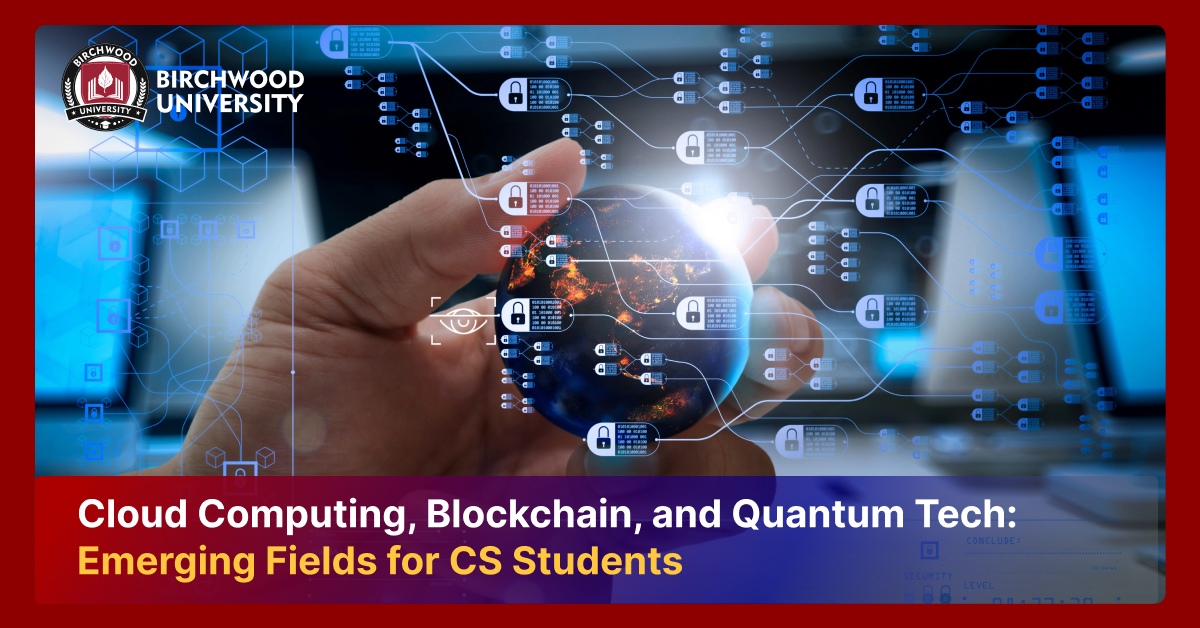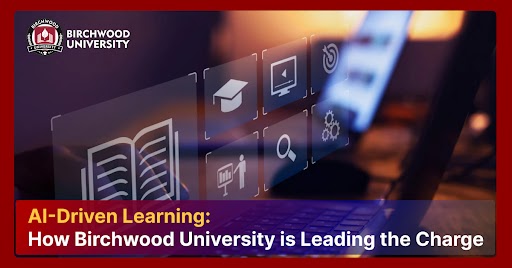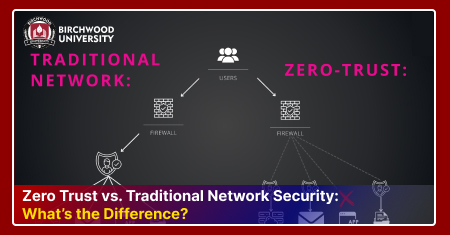AI, Avatars & VR: The Triad Powering the Metaverse Education Revolution
Jul 8, 2025The metaverse, a collective virtual shared space, is changing and shaping various industries, with education at the forefront of this transformation. The metaverse, through the integration of AI systems, avatars, and VR, is changing the way we learn, interact, and teach. These three technologies provide a new type of immersive, customised, and accessible learning environment, very different from traditional class setups. This blog examines the convergence of AI, avatars, and VR in deriving the metaverse education revolution: current applications, challenges, and the future it promises.
The Metaverse and Education: A New Frontier:
Often represented as a 3D internet, the Metaverse is basically a network of virtual worlds, interconnected so users can interact through their digital avatars. It brings a paradigm shift in education by replacing the old status quo of static and one-size-fits-all models with dynamic and learning by doing. The combination of Artificial Intelligence, avatars, and VR is the core of this transition, allowing the creation of interactive, adaptive, and engaging environments. A 2024 report forecasted by Gartner revealed that 25 per cent of educational institutions will have implemented metaverse technologies by 2028, owing to the necessity for innovative, scalable learning solutions.
AI: The Brain of Metaverse Education:
The metaverse has an AI-powered cognitive engine that allows people to have tailored and dynamic learning experiences. AI algorithms explore student data, including the rate of learning, preferences, and performance, and act as content adjustors in real-time. This individualisation is essential in the metaverse, where different learners across the world meet.
The Major AI Uses in Metaverse Education
Intelligent Tutoring Systems: Tutors based on AI, such as those created by sites like Carnegie Learning, give real-time instruction and assessment. These tutors will take the form of interactive avatars in the metaverse, providing one-on-one instruction in virtual classrooms. As an example, an AI tutor can make math problems easier or harder, depending on the student's progress; maximum challenge levels are guaranteed.
Natural Language Processing (NLP): NLP gives language an easy flow within virtual arenas. Multilingual chatbots and virtual assistants are supported by AI and can be deployed on such platforms as Engage VR, thus supporting the education of non-native speakers. In the instantaneous translation of languages, NLP has become strong enough to transcend language barriers across the globe in the classroom.
Learning Analytics: AI monitors the learning performance and activity levels of students in the metaverse. As an example, ClassVR platforms apply AI to monitor student engagement with virtual opportunities and help educators improve their teaching methods. In a 2023 study by the University of Maryland, AI-powered analytics maintained a 15 per cent increase in student retention rates within virtual learning settings.
Content Generation: AI produces dynamic instructional materials, exhibits, or quizzes based on lesson requirements. Software such as Google's Deepminds can make virtual simulations appear real, as though a scientific experiment or historical re-enactment, which increases the aspect of experiential learning.
Challenges of AI in Education:
Challenges in AI in the metaverse exist, despite its possible advantage. A large volume of student data is needed to enable AI systems to operate effectively, an aspect that poses questions about data privacy. Protection against a violation of such regulations as GDPR and FERPA is essential. Also, there is a threat of excessive dependence on AI, and thus, the importance of human factors in teaching might be reduced, which may have an impact on the relationship between students and teachers.
Avatars: The Face of Interaction:
The most major type of connection in the metaverse is the avatar or artificial robot of the user. They enable students and teachers to assume virtual identities and create the impression of presence and belonging in online environments. Avatars can help close the divide between the real and the virtual by adapting learning to be both easier to relate to and interesting. The Enhancement of Learning by Use of Avatars
How Avatars Enhance Learning
Identity and Expression: Avatars allow students to be creative in how they appear, allowing them to select one that aligns with their personality or cultural identities. Programs such as VRChat and Horizon Workrooms by Meta enable users to create their avatars and emulate inclusivity. A study carried out in 2024 by Stanford University revealed that learning involving the use of avatars improved student engagement by 20 per cent compared to traditional video conferencing.
Role-Playing and Empathy: Avatars also help to create a context of role-playing, which helps in increasing empathy and understanding. As an example, during a history lesson, students can become historical characters, participating in such period-related events as the French Revolution, having different points of view. This more participatory style enhances emotional intelligence and thinking.
Social Interaction: Avatars establish a communal feeling inside virtual classrooms. Virtual campuses work similarly with platforms such as AltspaceVR allowing students to work on projects, lecture, or socialize recreating the social areas of the traditional educational environment. This is very helpful to distant students who may be feeling isolated.
Accessibility: Avatars also provide an opportunity of access to disabled students with physical impairments to navigate freely through the virtual spaces. As an example, a student who has difficulties moving can take a full part in a virtual science lab where he or she conducts experiments with peers.
Challenges of AI in Education:
Making avatars alive and with a mix of everyone is costly in calculation capability and engineering know-how. Disturbances in immersion can come in the form of uncanny valley effects when avatars look too lifelike as though to be almost human. Furthermore, an avatar should be less alienating or stereotyping by being culturally sensitive and diverse.
VR: The 4th Dimension
The metaverse is made real by the virtual reality that offers immersive environments. VR allows working with conceptual elements, converting them into something tangible through simulating a real or fantastic environment. Current VR headsets, especially the Oculus Quest 3 and Apple Vision Pro, feature high-fidelity graphics and easy, convenient usage which makes them acceptable as an educational tool.
The Role of VR in Metaverse Education
Immersive simulations: VR will help students to visit places that are not available in real-world settings. As an example, Osso VR is a platform that allows medical students to practice surgeries in virtual operating rooms, claiming a 30 per cent increase in the quality of surgical training in 2024.
Global Classrooms: VR allows students around the globe to interact through a common virtual environment. Such universities as Arizona State organise global lectures on the VR platform, and the students of various continents interact together in real-time. This promotes international understanding and international relations.
Skill Training: VR facilitates the practical learning of skills. As an example, welding students may train in a virtual workshop where there are fewer material and safety expenses. According to a 2023 estimate made by PwC, VR-based training is 40 per cent cheaper than the traditional technique.
Engagement and Retention: VR increases engagement, as it is immersive. In a 2024 meta-analysis by the Journal of Educational Technology, VR-based learning was found to improve knowledge retention by 25 per cent over conventional techniques their study directly compared to, as students are put into active engagement with the learning material through the use of the technology, in contrast to the passive nature of the traditional learning techniques.
VR Challenges
Expensive VR hardware and software continue to be a barrier, especially to underfunded schools. There are challenges of motion sickness and accessibility to the visually impaired student as well. Also, there is a risk of fatigue with long hours of VR use, and sessions have to be managed.
Synergy of the Triad:
The potential of the metaverse is right in the combination of AI, avatars and VR. AI customizes learning and drives smart avatars whereas VR gives the immersive background of these experiences. As an example, an AI implemented in a virtual biology course analyzes the pace of a student to customize a virtual tissue dissection lab, the avatar is customized to resemble the student and interacts with other avatars in the virtual reality dissection room. This combination results in a smooth and enjoyable learning process.
An example of this synergy is platforms such as Microsoft Spatial and Mesh. Mesh integrates AI-powered analytics, personalizable avatars, and virtual reality settings to create collaborative learning environments. By the same token, Spatial applies AI logic to create interactive content, where avatars can assist in group conversations within virtual environments. These platforms illustrate how the triad exacerbates outcomes in education.
Current Applications and Case Studies:
Some institutions are leading the way when it comes to metaverse education:
Stanford University: Stanford Virtual Human Interaction Lab applies VR and avatars to train people in empathy and social skills, and AI monitors emotional reactions to maximise learning benefits.
University of Maryland Global Campus: The virtual campus UMGC created in Second Life incorporates AI tutors and avatars, with a 15 per cent increase in student satisfaction.
VictoryXR: It provides AI-powered VR classrooms where schools such as Georgia Tech can use VR to teach advanced topics such as engineering.
Challenges and Ethical Considerations:
The revolution of education using the metaverse is promising, but it has challenges:
Equity and Access: VR hardware is expensive, and so is internet connectivity, thus keeping low-income communities out. Programs such as Meta Quest for Education also seek to subsidise devices, although at scale this has been a challenge.
Data Privacy: Using student data makes AI subject to actual or potential surveillance. There should be thorough encryption and data policies.






